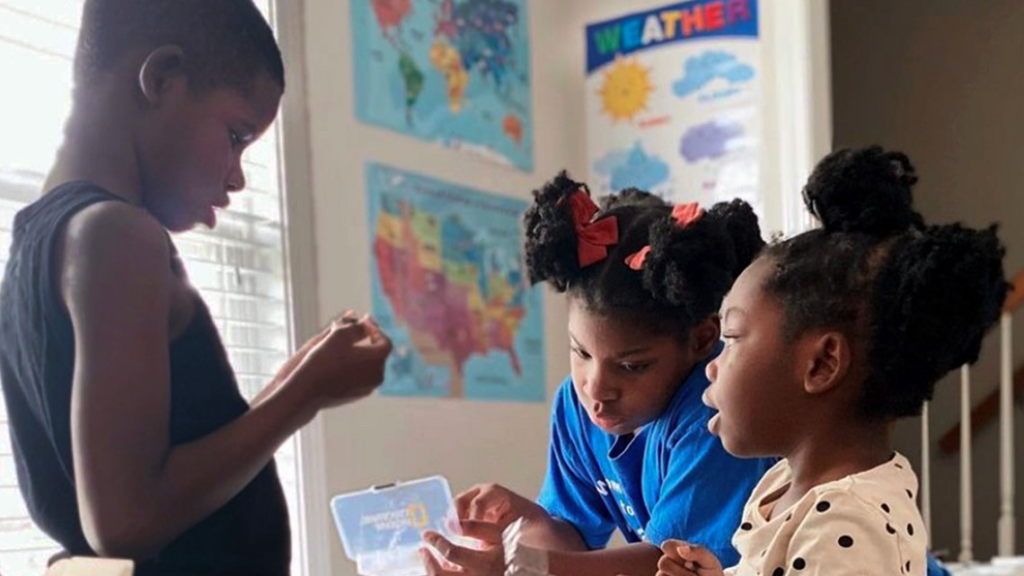In recent years, homeschooling in the United States has seen a massive rise. What was once a niche choice for a small group of parents has now become a mainstream option. From cities to small towns, more and more American families are pulling their children out of traditional schools and choosing to educate them at home.
But what’s behind this growing trend? Why are parents deciding to take their child’s education into their own hands?
Let’s explore the major reasons why homeschooling is booming in the U.S., what challenges families face, and what this shift means for the future of American education.

The Numbers Tell the Story
According to the U.S. Census Bureau, homeschooling numbers doubled between 2019 and 2021. In 2019, only about 3.3% of school-aged children were homeschooled. By the fall of 2021, that number jumped to over 11% in some states.
While the COVID-19 pandemic played a key role in this spike, the trend has continued even after schools reopened. This shows that homeschooling is no longer just a temporary solution—many families see it as a long-term choice.
The Pandemic Sparked a New Perspective
One of the biggest reasons for the rise in homeschooling is the pandemic. When schools shut down in 2020, millions of parents were suddenly responsible for their children’s education. Virtual learning became the norm, but it came with many problems: tech issues, lack of focus, and limited interaction.
During this time, parents got a close-up view of their child’s daily learning process. Some didn’t like what they saw. They realized they could teach just as well—or better—than a busy classroom. This led to a shift in mindset: “Why not just keep homeschooling even after schools reopen?”
Concerns About School Safety
Another major reason for homeschooling is concern about safety. School shootings, bullying, and mental health struggles have made many parents nervous about sending their kids back to traditional schools.
For some families, homeschooling offers peace of mind. Parents can create a safe learning environment without the fear of violence or peer pressure. They can also better monitor their child’s emotional well-being.
Flexibility and Personalized Learning
Traditional schools often follow a rigid schedule. Children must learn at the same pace, regardless of their personal strengths or weaknesses. Homeschooling changes that.
At home, children can learn at their own speed. If a child excels at math but struggles with reading, their lessons can be adjusted accordingly. This personalized approach helps kids build confidence and enjoy learning more.
Additionally, homeschooling allows families to set their own schedules. This is especially helpful for families who travel often, live in rural areas, or want to include religious or cultural teachings in daily lessons.
More Resources Than Ever Before
Homeschooling used to mean a lot of work for parents—designing lessons, grading papers, and finding educational materials. Today, that has changed.
Thanks to the internet, families now have access to high-quality online curricula, educational apps, tutoring platforms, and even virtual co-ops. Some programs are designed by certified teachers and follow state standards.
Communities of homeschooling families are also growing. They often form local groups for group lessons, field trips, sports, and social events. This makes it easier for homeschooled kids to stay connected with peers.

Better Academic Results for Some Students
Research shows that homeschooled students often perform as well—or better—than public school students on standardized tests. This doesn’t mean homeschooling is always better, but it shows that it can work well when done with care.
Homeschooled children often benefit from one-on-one attention, fewer distractions, and a focus on mastery instead of grades.
Many homeschooled students go on to attend college, and universities are now more open than ever to accepting homeschool graduates.
Challenges Still Remain
Despite its benefits, homeschooling isn’t easy. It requires a lot of time, effort, and patience from parents. Not every family has the resources or ability to teach full-time.
In some states, homeschooling laws can also be confusing. Parents may need to register with the school district, keep detailed records, or meet testing requirements.
Socialization is another concern. While many homeschooled kids have active social lives, it takes more effort to arrange playdates, sports, or group learning.
Diverse Families, Diverse Reasons
Homeschooling is no longer just for one type of family. Today, families of all races, income levels, and backgrounds are choosing it for various reasons.
Some parents want to give their children a faith-based education. Others are unhappy with how schools teach certain topics. Some children have special learning needs that are better met at home.
This diversity is helping to shape a more flexible and inclusive homeschooling movement across the country.
Looking Ahead: What’s Next for Homeschooling in the U.S.?
With technology improving and more families seeing positive results, homeschooling is likely to grow even more in the coming years. Many experts believe that hybrid models—where children split time between home and community learning centers—could become more popular.
The rise of homeschooling also puts pressure on public schools to evolve. If traditional education doesn’t meet the needs of modern families, more parents may choose to walk away.

Final Thoughts
Homeschooling in the United States is no longer a fringe idea. For millions of families, it has become a meaningful and effective way to educate their children. While it isn’t the right fit for everyone, it offers flexibility, safety, and personalized learning in ways that traditional schools often cannot.
As more families explore this path, the education landscape in America is changing—perhaps for good.



